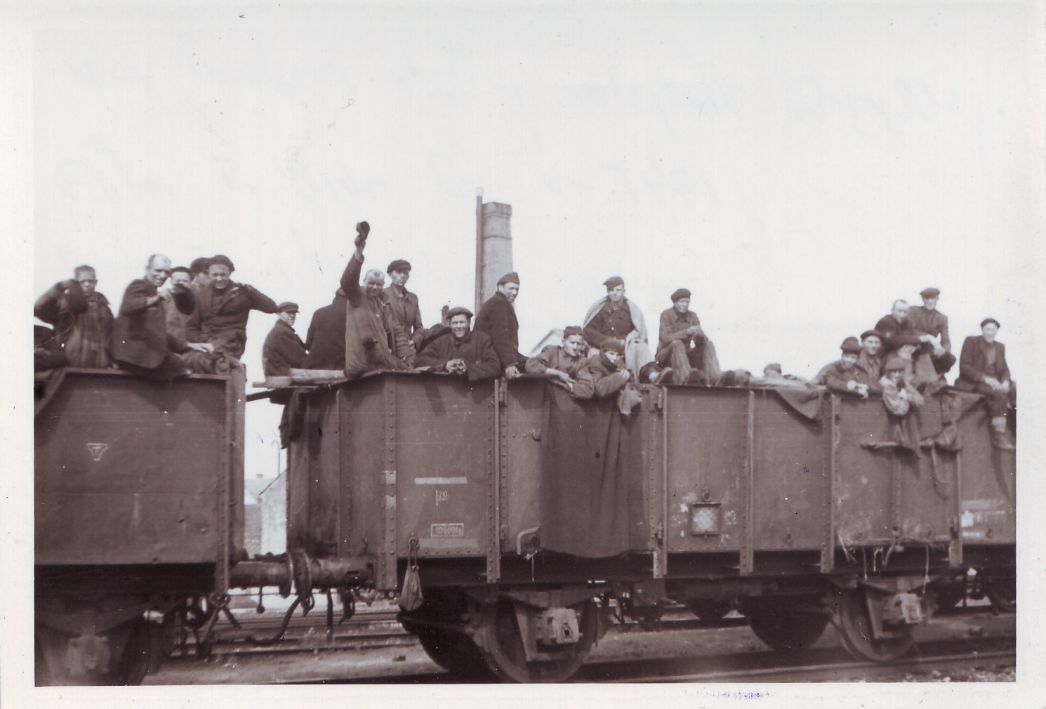
©Moreshet Archives, Givat Haviva
Every day, the SS rounded up thousands of inmates for departure. On 8 April, the thirty-seven-year-old Frenchman Joseph Onfray from Alençon was one of those standing on the muster ground, facing the camp gate and awaiting the signal to march.
He later remembered:
“Around 4pm we looked at the clock over the gate for the last time—the clock that had beat the rhythm of our lives for a year. At 4pm the block began to move in rows of two. A member of camp protection made a note of the numbers of those leaving, and we passed through the gate into the unknown. ‘To Each His Own …’. Block by block, and flanked by a weak SS guard force, we made our way down the mountain towards Weimar. One last time, we walked down the access road to the camp. We saw bomb-gutted barracks, the socle of the Reich eagle, the factory and garages in ruins. You places of terror, we leave you with regret, for our future is even more uncertain than our bitter past.”[1]
On the days before the liberation, the SS drove altogether 28,000 men and boys out of the camp. They were sent off on endless treks and overcrowded boxcars towards Dachau, Flossenbürg and Terezín. Thousands lost their lives along the way. It was not until shortly before the war’s end in early May that the last remaining Buchenwald inmates were liberated.
[1] Joseph Onfray, L’ame résiste: Journal d’un déporté (Alençon 1948), p. 264 (translation JR).

